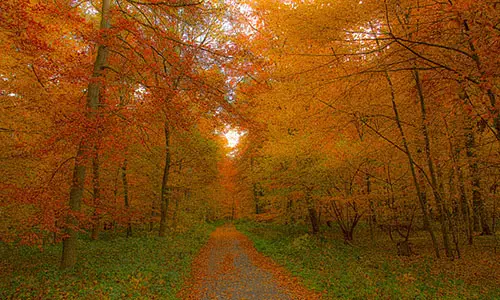1. Location
Deciduous forests are primarily located on the eastern parts of the United States, Europe, Canada and parts of Japan, Russia and China. These forests are notable for their ability to survive through four seasons. During autumn, the leaf color of vegetation in deciduous forests changes and leaves fall off during winter. In spring, the leaves grow back, an adaptation that enables plants to survive through the cold winter. There are two large deciduous forest areas in Southern Chile and Paraguay. These forests are also found in Southeastern Australia and New Zealand.
2. Climatic Conditions
Deciduous forests are the second in terms of wetness after rainforests. The average annual temperature in deciduous forests is around 50 degrees Fahrenheit or 10 degrees Celsius. Generally, temperatures range between -30 and 30 degrees Celsius throughout the year with cold winters and hot summers. On average, deciduous forests receive 750mm to 1500mm of rainfall per year.
3. Seasons in Deciduous Forests
Many deciduous forests experience four seasons per year with each season lasting about three months. There are specific regional discrepancies that affect how seasons in deciduous forest manifest across the deciduous biome. For instance, deciduous forests located along coastal zones tend to experience more temperate climate and rainfall which lowers seasonal changes.
4. Vegetation Cover
Though deciduous forests do not have plenty of vegetation, they have numerous trees that have huge amounts of flowers. These trees provide shelter for wild animals as well as water and food. Deciduous forests also have different kinds of flowers such as blue lily and passion berry. Trees in deciduous forests adapt to the climate by developing thick barks that prevent them from dying and keep wild animals away.
5. Deciduous Forest Zones
Deciduous forests are subdivided into five zones based on the height of trees. The first deciduous forest zone is known as the Tree Stratum which contains trees with heights of 60 to 100 feet. These include beech, oak, maple, elm, chestnut and linden. The second is the Sapling zone with young, short trees. Shrub zone comes third with shrubs such as huckleberries, mountain laurel and azaleas. Herb zone is the fourth with short plants and the ground zone is fifth with plants such as true mosses, lichen and club mosses.
6. Animal Adaptation Techniques
Animals living in deciduous forests adapt to climatic changes by hibernating during winter seasons and surviving off land during fall, autumn and summer. Most animals have camouflaging ability. Insects look like leaves, tree branches or other natural component in the forest. Crawling animals camouflage to appear like the soil for protection against predators and effective hunting. Animals also try plants in the forests to see whether they are fit for consumption.
7. Plant Adaptation Techniques
Plants in deciduous forests lean towards the sun in order to make food. They also soak up nutrients from the ground to stay alive during cold seasons. Most trees in these forests have sap that they use to protect their roots from freezing during the cold winters.
8. Leaves Change Color in Fall
The leaves of trees in deciduous forests change color during fall. This is because the trees stop producing chlorophyll that gives leaves the green color. In deciduous forests, the growing season lasts for about 6 months. The presence of deciduous trees makes the soil in deciduous forests very fertile and rich in nutrients.
9. Insects Lay Eggs and Die
Insects in deciduous forests are not able to survive the cold winters. They lay eggs before the winter and die. The eggs survive the winter season and hatch during spring resuming the life cycle.
10. Animals in Deciduous Forests
Deciduous forests are mostly inhabited by wolves, black bears and coyotes. These animals are found mostly in Europe, China, Japan and North eastern parts of the U.S.











October 4, 2020 12:36 am
Thank you very much!
It helped me on my test and quizzes. When i read it, i have understood all about deciduous forest and everything.
Thank you very much 🙂